Home » ipca
A big welcome to the newest Marine Protected Area (MPA) — Tang.ɢ̱wan – ḥačxwiqak – Tsig̱is — off the coast of BC!

The abyssal plains of the deep sea floor are often viewed as vast, dark, empty spaces. But the deep sea far off the BC coast couldn’t be more different. Dotting the flat seascape are geologic wonders such as seamounts and hydrothermal vents teeming with abundant otherworldly marine life!
Located 150 km west of the coast of Vancouver Island, deep in the ocean, is a unique and spectacular underwater world. The Tang.ɢ̱wan – ḥačxwiqak – Tsig̱is MPA (TḥT for short) will protect a network of hydrothermal vents (think deep sea geysers or hot springs releasing superheated and mineral-enriched water) and seamounts (ancient volcanic mountains that can tower higher than Whistler Mountain). These biological hotspots provide habitat, shelter, food, spawning grounds, and nurseries for wildlife. It truly is a “Deepsea Oasis.”
Canada’s first MPA, Endeavour Hydrothermal Vents, which protected 5 vents and 97 km2 since 2003, is now part of this new MPA that spans over 133,000 km2.
Indigenous-led Conservation
The name for this new MPA is three words from the Haida, Quatsino, Nuu-chah-nulth and Pacheedaht Nations.
- Tang.ɢ̱wan: a Haida word meaning deep ocean (pronounced “Tung – Gwun”)
- ḥačxwiqak: a Nuu-chah-nulth and Pacheedaht word meaning deepest part of the ocean (pronounced “huch/khwi/kuk”)
- Tsig̱is: a Quatsino word referring to a monster of the deep (pronounced “tsee-geese”)
It’s easier to pronounce than it seems! If you need some more help, listen to the pronunciation.
This incredible area will be co-managed by the Nuu-chah-nulth Tribal Council, Council of the Haida Nation, Pacheedaht First Nation, Quatsino First Nation and the Government of Canada. In the spirit of reconciliation, it will be managed using both science and traditional knowledge and uphold First Nations rights to governance.
Weird and Wonderful Wildlife
The area is home to some of the weirdest and most wonderful creatures on the planet:
- Dumbo octopuses are a group of deep sea octopuses that flap ear-like flippers on their heads to move around, much like Dumbo the elephant in the famous Disney movie.
- Tubeworms are unlike almost any other creature on the planet. Instead of getting their energy from sunlight , they rely on bacteria that are able to produce energy from the mineral rich water expelled from hydrothermal vents.
- Sea pigs are actually types of sea cucumbers, named for their pinkish colour. They use their tubelike feet to walk along the sea floor while they feed on organic matter that sinks down from shallower waters.
- Last year, scientists discovered a seamount covered in a million skate eggs in the MPA. The ancient volcano is spouting warm fluid, providing little-known species of skates with an ideal nursery. Scientists believe the geothermal heat helps incubate the eggs and speeds up development.
The deep sea is a dark and mysterious place — under-mapped and under-explored. We have only begun to scratch the surface of what lives here. Who knows what other amazing creatures will be found in the future?
Upholding Strong Protection is a must
Canada’s new MPA protection standard will prohibit oil and gas exploration, development, and production, disposal at sea of waste, and most importantly for this area specifically, mineral exploration and exploitation and the use of bottom-trawl gear. With the growing need for rare minerals to power electric vehicles, deep sea environments are under threat from an industry that would tear apart wildlife-rich seamounts. This environment is also especially vulnerable to bottom trawling which uses heavy weighted nets dragged on the seafloor to indiscriminately capture any and all sea life, including rare protected species and habitat-forming corals and sponges.
Protection of these important and rare ecosystems would not be possible without the support of the public who signed petitions, wrote letters, and participated in consultations. Thank you also goes out to First Nations leadership and elected officials for helping secure legal protections. And finally, thanks are given to the scientists, communicators, and marine planning professionals from Federal and Indigenous governments, non-profit organizations, and universities such as those at the Northeast Pacific Deep-sea Exploration Project (NEPDEP). They explored and discovered these amazing places, conveyed their importance to the world, and worked tirelessly behind the scenes conducting the much needed technical work to make this new Marine Protected Area a reality.
This Is Only The Beginning
The MPA work doesn’t stop with designation. The Haida, Quatsino, Nuu-chah-nulth and Pacheedaht Nations and the Government of Canada must now work to form a management board. An advisory committee, with conservation groups like CPAWS-BC, will also be established. Together, they will create a management plan to make sure we know the MPA is protecting the ecosystem, which means monitoring, enforcement and management of human activities. We will be there to help ensure this special part of the ocean is strongly protected.
Read more about THT.
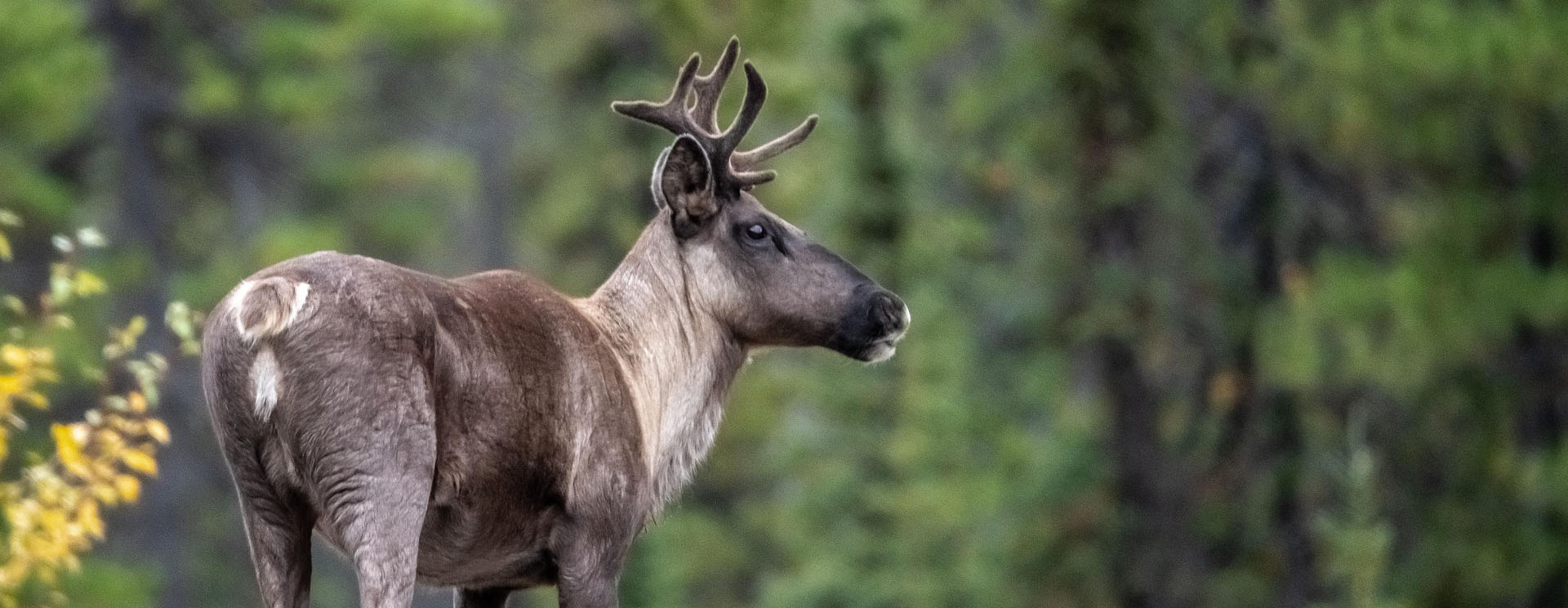
Klinse-za/Twin Sisters Park expansion adds over 170,000 hectares, a welcome step for caribou and collaborative conservation
June 14, 2024
Unceded territories of the Coast Salish Peoples/Vancouver, BC – A significant park expansion added in critical Peace Region caribou habitat is welcomed by the Canadian Parks and Wilderness Society – British Columbia. The 170,000 hectare Klinse-za Park expansion will result in the largest provincial park established in B.C. in a decade.
The expansion of the Klinse-za/Twin Sisters Provincial Park is for about five times the Park’s current size, and over twice the size of Manning Park. The expansion stems from a 2020 Partnership Agreement between the federal and provincial governments and West Moberly and Saulteau First Nations which established conservation commitments for endangered Southern Mountain Caribou.
“Protecting the habitat and foods that caribou depend on is key to long-term both caribou and community health, this park expansion is much awaited and welcomed for this iconic species,” says Tori Ball, Conservation Director – Lands & Freshwater Program at CPAWS-BC. “West Moberly and Saulteau First Nations are leaders in caribou conservation efforts and the formal protection of this important caribou habitat is a testament to their perseverance and leadership to secure a future for these important species.”
The area is home to the central group of Southern Mountain Caribou, consisting of five remaining herds. Recovery efforts, led by the West Moberly and Saulteau First Nations, have seen the Klinse-za herd rebound from just 16 animals in 2013 to over 100.
Caribou are in trouble, with many herds in BC at risk of disappearing due to an onslaught of resource development. Securing long-term protection of their habitat is key to their survival. Protecting caribou habitat will also benefit other wildlife species, and help ensure healthy ecosystems for all residents of BC.
Caribou require large intact and connected areas to thrive and function as an indicator species, letting us know the health of the forests and ecosystems they inhabit. Protecting caribou habitat in turn benefits many other species as well as the ecosystems that we all depend on.
“This park expansion will have positive impacts for the health of the surrounding ecosystems and iconic caribou herds. Working towards the global goal of protecting 30% of lands and waters by 2030 needs to benefit and include everybody, and it is important that we protect another over 14% of BC by moving forward together,” added Ball.
Media Contact:
Max Winkelman
Communications Manager
max@cpawsbc.org
604-685-7445 x3
Background Info:
- Southern Mountain Caribou are divided into 3 population groups:
- Northern with 9 herds – BC blue list, imperilled-special concern
- Central with 5 herds – BC red list, imperilled-critically imperilled
- Southern with 18 herds – BC red list, critically imperilled
- The central group are the caribou in the Klinse-za park region, though the northern edge of the protected area is the border to the northern group of Southern Mountain Caribou
- Woodland caribou are old-growth dependent and the main threats to their survival are from direct and indirect habitat loss and disturbance
- West Moberly and Saulteau First Nations initiated a maternity penning project as part of their caribou conservation efforts as an urgent action to stop the rapid decline of the Klinse-Za herd.
- The Intergovernmental Partnership Agreement for the Conservation of the Central Group of the Southern Mountain Caribou is an agreement between West Moberly First Nations, Saulteau First Nations, the government of Canada, and the government of BC. The agreement was signed in February 2020 and includes commitments for land protection in northeast BC and an Indigenous guardians program

May 2, 2024
It’s a big win for Indigenous-led conservation on the world stage! Kitasoo Xai’xais Nation’s Gitdisdzu Lugyeks (Kitasu Bay) Marine Protected Area (MPA) has won Marine Conservation Institute’s prestigious Blue Parks Award — the first award in Canada and the first Indigenous-led blue park in the world.
Located near Klemtu on the central coast of BC, the Gitdisdzu Lugyeks MPA is a haven for marine life. Strong tides bring nutrient rich water into the bay, providing a rich source of food for fish, seabirds and marine mammals. Seagrass meadows and kelp forests provide herring with spawning grounds and other young fish with protective nursery habitat.
Designated in 2022, the MPA doesn’t just support nature, it sustains people as well. Gitdisdzu Lugyeks is an integral part of the culture, livelihoods and traditions of the local community. It is known as a spiritual place whose waters and marine life are vital to the Nation’s economy, health and culture. If marine life can thrive here, it is hoped that richness can expand into nearby areas and benefit both the people and wildlife that depend on the coast.
“We know these waters better than anyone, Kitasu Bay has been part of our home for thousands of years through to the present day,” said Hereditary Chief Nies’los (Kelly Robinson) in 2022.
Living around and stewarding these waters for thousands of years, the Kitasoo Xai’xais Stewardship Authority are weaving traditional knowledge and modern science together to responsibly care for the biodiversity and resources of the MPA. With the Kitasoo Xai’xais Guardian Watchmen monitoring these waters, management will follow the guiding principles of the Nation: loomsk (respect), sagayt k’uulm goot (interconnectedness), sityaaw (reciprocity), and gugwilx’ya’ansk (intergenerational knowledge).
Recognizing this, Marine Conservation International awarded Gitdisdzu Lugyeks with a Blue Park award earlier this month. These awards are given in recognition of exceptional marine biodiversity conservation; having met the highest science-based standards for conservation effectiveness. The judging panel considers the productivity and importance of the MPA’s location as well as its regulations and management.
“Receiving this Blue Park Award not only recognizes what we’ve been doing as a Stewardship Authority, but it also sets the stage for other Indigenous Nations to use this as a blueprint for their own protected areas in their territories,” said Kitasoo Xai’xais elected Chief, Doug Neasloss. “The management plan for Gitdisdzu Lugyeks combines our traditional knowledge and responsibilities with western science in a way that protects ecosystems and human livelihoods, and we’re grateful that this award recognizes the strength in that combination.”
This award is further proof of the effectiveness of Indigenous-led conservation. In 2019, a UBC-led study found that the total numbers of birds, mammals, amphibians, and reptiles were all greatest on lands managed or co-managed by Indigenous communities, higher than parks and wildlife reserves.
Gitdisdzu Lugyeks will be part of the Great Bear Sea Marine Protected Area Network, an initiative led by 15 First Nations along the north and central coast. The network aims to connect new protected areas to already existing ones to help restore the region’s ocean to abundance for the benefit of children, grandchildren, and future generations.
This award is further proof that Indigenous-led conservation is the way forward. Learning from their vision and knowledge, a healthy coast can be achieved for the well-being of everyone in British Columbia.
Read more about the the Gitdisdzu Lugyeks MPA at:
The Narwhal
National Observer
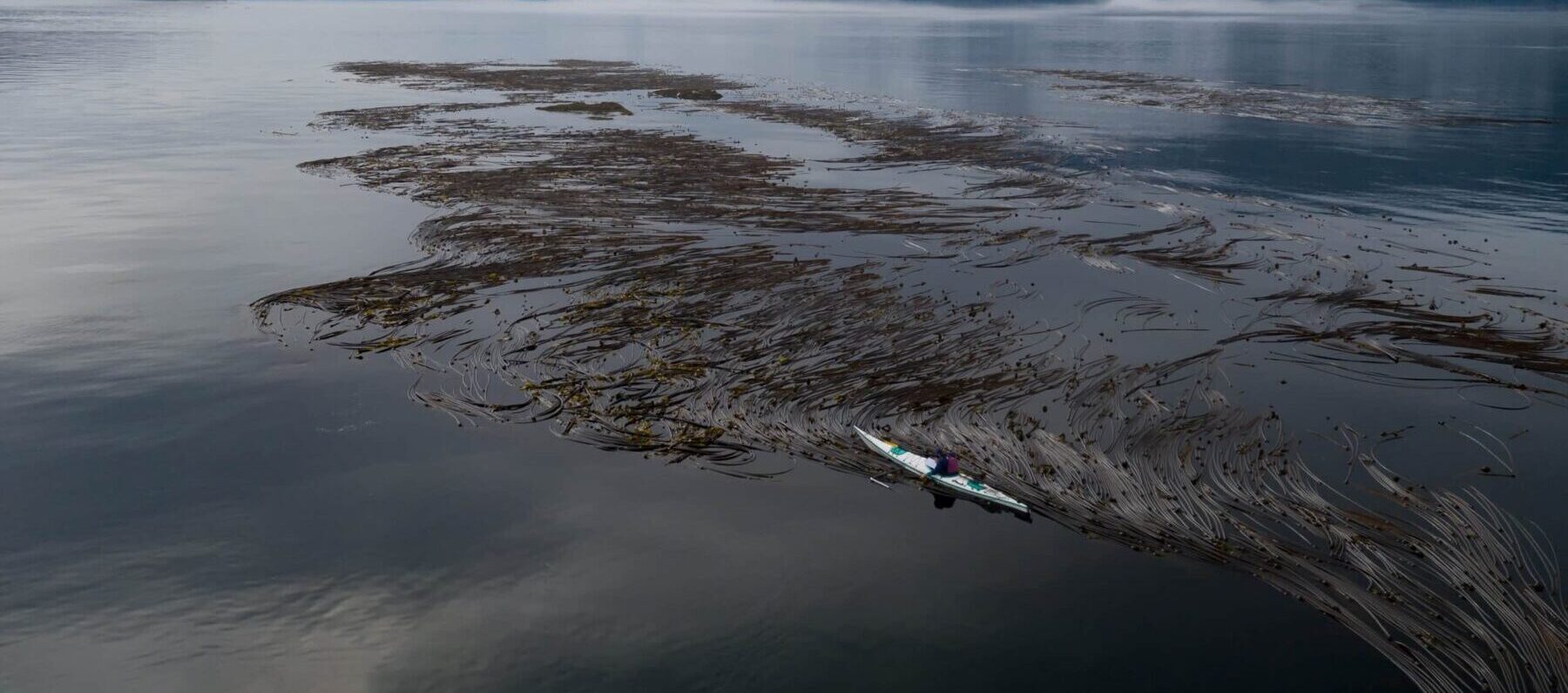
Earlier this year, we celebrated that 15 Indigenous Nations, BC, and Canada endorsed the Great Bear Sea Marine Protected Area Network Action Plan. What did this mean exactly?
Here are 5 things you should know about the Great Bear Sea Marine Protected Area Network:
1) Many years, many voices
The Great Bear Sea Marine Protected Area Network was created collaboratively by Indigenous and coastal communities from North Vancouver Island, along the Central Coast to the North Coast and across to Haida Gwaii.
For over 10 years, there have been many meetings and conversations with people who live and work on the coast, including the fishing, tourism, and environmental sectors.
Together, governance partners—First Nations, federal and provincial governments—and stakeholders have developed a plan that will protect the vibrant network of life in the Great Bear Sea for generations to come.
2) More fish in the ocean
Right now, we see fish populations in Pacific Canada at a fraction of their historical levels [1]. The Great Bear Sea Marine Protected Area Network is a tool to help rebuild fisheries and recover ecosystems, limiting catches of certain species should be coupled with protecting habitats where marine life feed, breed, and grow up.
We can look at long-term studies from other areas to see the real and powerful benefits of marine protected areas for helping fisheries and improving food security. One example is the marine protected area network established in California a decade ago which has already shown encouraging results, including more and larger fish beyond the boundaries of the protected areas, including species targeted by fisheries [2][3]. Over the first 10 years, local fisheries either improved or stayed the same in terms of catch, effort and dollar value [4].
3) Defence from many different threats
Marine protected areas limit activities that threaten marine life. Whether it’s the loss of critical ecosystems like cold water corals and sponges, seagrass and kelp or impacts on marine animals from ship dumping, we can reduce threats to ocean health by managing destructive human activities. Canada has committed to ban the most harmful activities in all marine protected areas, these include oil and gas, mining, bottom-trawling, and dumping. When the damage and destruction from these industrial activities is removed, these areas are refuges that better support marine life and whole ecosystems to adapt to other threats, such as warming waters and ocean acidification [5][6].
4) Benefits far beyond the boundaries
Marine protected areas provide both direct and indirect benefits to local economies and beyond. Marine protected areas help rebuild and sustain fisheries. They’re a proven tool to help enhance community involvement and support marine tourism. Local economies also benefit from creating conservation-related jobs such as monitoring, management, and research [7][8].
Marine protected areas also protect the ecosystem services these areas provide, such as protecting key coastal habitats that reduce the vulnerability of communities to climate change threats such as storm damage, flooding and coastal erosion [9], and protecting and restoring kelp forest and seagrass meadows that help the sequestration of carbon [10]. Moreover, a healthy, safe, and thriving ocean uplifts cultural and spiritual values across generations.
5) Supercharge conservation effectiveness!
Establishing a connected network of marine protected areas in the Great Bear Sea will defend and support a diversity of habitats. By establishing a network of marine protected areas rather than creating individual protected areas without considering the connections across the ocean, will supercharge their effectiveness. This is the opportunity to work together across communities and sectors to amplify the benefits of individual protected areas and ensure the large-scale processes that keep ecosystems and wildlife populations healthy will remain.
What’s next?
A healthy ocean full of fish, kelp, and whales, and is part of the legacy we want to leave for our children and grandchildren.
After years of work to develop the draft action plan for the Great Bear Sea Marine Protected Area Network, the announcement in February 2023 meant that everyone can continue working on the details to make the plan a reality. Equipped with the long-standing process between Indigenous Nations and governments, input advisory tables with stakeholders, and feedback during the public consultations, we can build on these collaborations.
Debra Sinarta, Marine Research Coordinator
Kate MacMillan, Ocean Conservation Manager
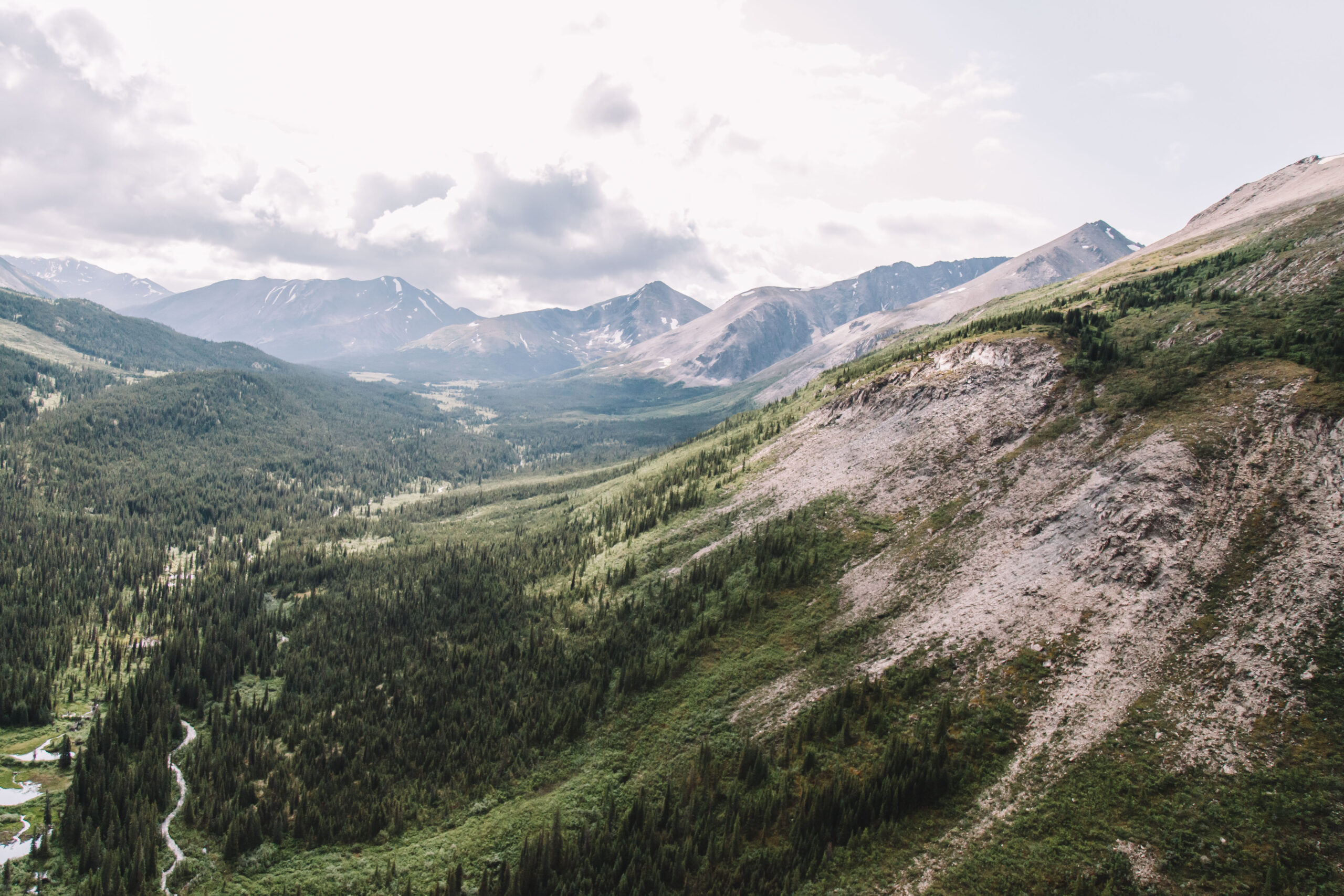
Indigenous Peoples have cared for lands and waters since time immemorial. As original stewards, Indigenous Peoples’ leadership, knowledge and experience are essential to mapping a future where communities and Nature can thrive.
Indigenous Protected and Conserved Areas (IPCAs) play a critical role in conserving biodiversity and reducing the effects of climate change.
What are IPCAs?
The Indigenous Circle of Experts (ICE) report, We Will Rise, defines IPCAs as “lands and waters where Indigenous governments have the primary role in protecting and conserving ecosystems through Indigenous laws, governance and knowledge systems. Culture and language are the heart and soul of an IPCA”.
IPCAs can vary in many ways, but they share three essential elements:
- They are Indigenous-led
- They elevate Indigenous rights and responsibilities
- They represent a long-term commitment to conservation
Indigenous Peoples are the most effective land managers. Indigenous-managed lands and waters span approximately 20% of the planet, yet support 80% of the world’s biodiversity. IPCAs support Indigenous cultural connection to the land and waters, encourage respectful and reciprocal interactions with the natural world, and help address the dual crises of climate change and biodiversity loss. IPCAs are a path forward to advance reconciliation and support biodiversity.
IPCAs advance reconciliation efforts
Supporting IPCAs provides an opportunity for the BC and Canadian governments to advance reconciliation by recognizing and upholding Indigenous rights.
Government support for IPCAs includes:
- Co-developing protected areas with Indigenous Nations
- Establishing a legal framework to recognize IPCAs, and
- Providing continued resources to support Indigenous Guardian programs across BC and Canada
IPCAs recognize the intimate relationship between Indigenous Peoples and the lands and waters within their Territories. They provide opportunities for Indigenous People’s inherent right to govern their lands, water, wildlife and plants; practice their culture; and develop or use natural resources.
IPCAs help protect biodiversity
There are dozens of examples in BC where IPCAs are already leading the way to advance conservation on land and in the ocean.
Current IPCA proposals would add just over 9% to BC’s protected area land base. Added protection for millions of hectares of lands and waters would support vibrant networks of life, provide a haven for species at risk and create climate refuges for wildlife—all under the leadership of Indigenous Nations.
IPCAs weave together Indigenous Knowledge and western science to protect biodiversity. Indigenous Knowledge—accumulated over thousands of years of lived experiences with the land— provides immense insight into how to support biodiversity. Using both knowledge systems strengthens efforts to address complex environmental issues like biodiversity loss.
How are IPCAs Created?
There is no one-size-fits-all approach to creating an IPCA. However, Indigenous communities lead in every aspect, from designation to management planning, monitoring, enforcement, and more.
No pathway currently exists to recognize or support IPCAs through provincial or federal legislation or policy. Indigenous Peoples have the right to self-determination and can establish an IPCA in their territories without legal recognition from non-Indigenous governments. Recognition and support, where requested, from BC and Canada would help support the creation of IPCAs. When invited, provincial and federal acknowledgement of IPCAs would ensure management plans are respected and help limit any expressed prohibited activities including mining, logging or bottom-trawling that can harm the environment.
Indigenous-led conservation signals a path toward a brighter future. Centering Indigenous Peoples at the forefront of land-use planning and decision-making in their territories helps uphold Indigenous rights to culture, land, and ways of life.
How can you support Indigenous-led conservation?
Many Indigenous laws and cultures have deep connections to the health of Nature and biological diversity today. These teachings guide a balanced relationship with the land, water, plants, and animals in a way that ensures abundance for future generations.
Fish, wildlife and their habitats are declining at an alarming rate globally and right here in BC. Over 1,600 species at risk call BC home.
IPCAs play a critical role to advance reconciliation, conserve biodiversity and reduce the effects of climate change as we all work together to protect 30% of lands and waters by 2030.
Resources
By learning about Indigenous-led conservation and sharing it with others, your support starts here. Below are resources for further learning and actions to show your support for Indigenous-led conservation.
Further Reading
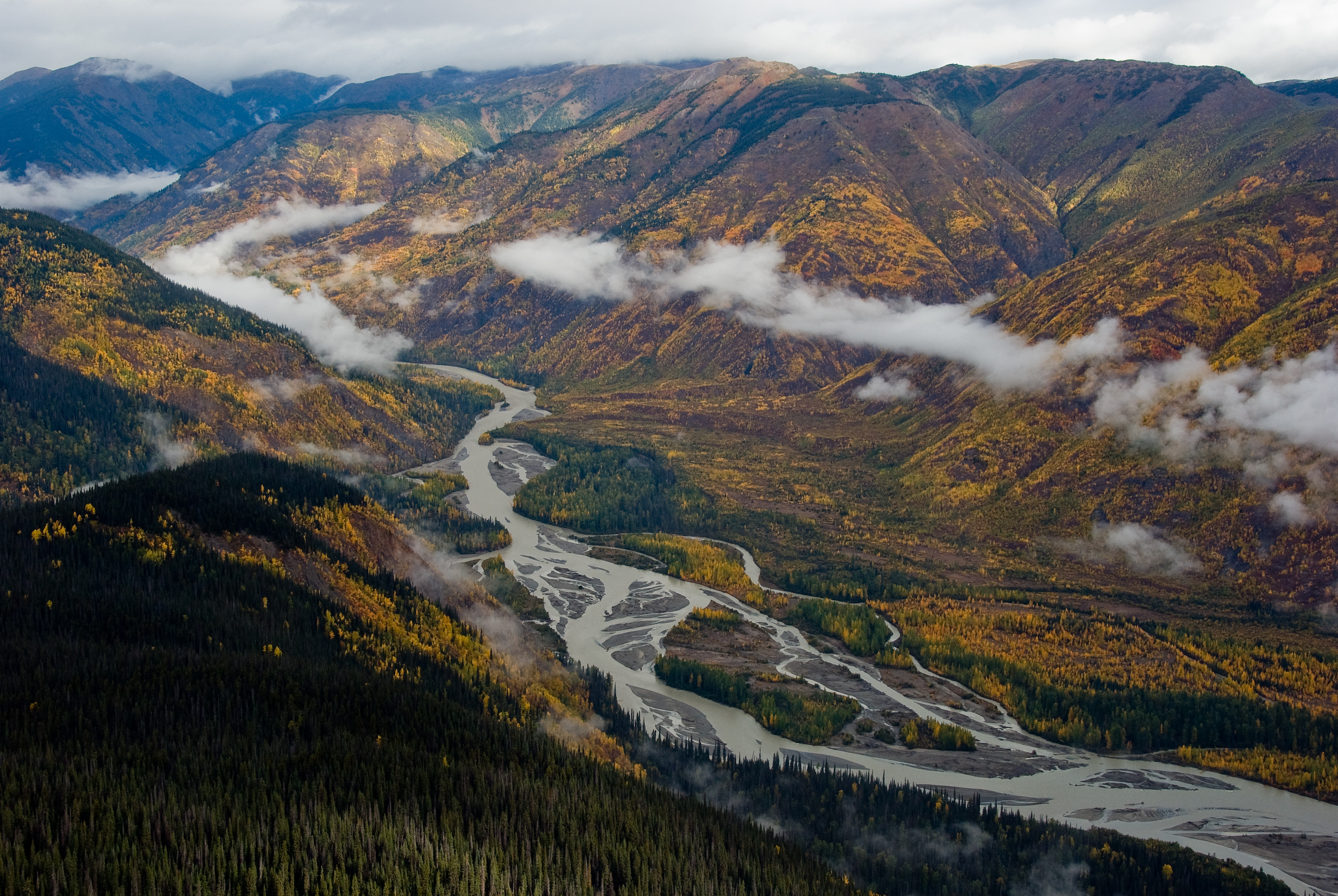
January 26, 2023
Unceded Coast Salish Territory / Vancouver, BC – The Canadian Parks and Wilderness Society – British Columbia (CPAWS-BC) joins Taku River Tlingit First Nation in celebrating the Declaration of an important new protected area in their traditional Territory.
Located in the far northwestern corner of BC is the sprawling Taku watershed, a biodiverse ecosystem that sustains five species of Pacific salmon and a vibrant network of life. The T’akú Tlatsini Indigenous Protected and Conserved Area (T’akú IPCA) will encompass 60 percent of the Taku River system to preserve critical landscapes, and the remaining 40 percent will be in specially managed landscapes.
“This Declaration is an example of how Indigenous-led conservation is at the forefront of work to halt and reverse biodiversity loss,” says Meaghen McCord, Executive Director CPAWS-BC. “Support for IPCAs are an important opportunity for BC to honour Indigenous rights, further reconciliation efforts and are central to the province’s commitments to protect 30% of land by 2030.”
The Taku is the largest fundamentally intact watershed on the Pacific Coast of North America and CPAWS has long recognized its significance and supported additional measures to protect it. The inclusion of diverse and critical habitats within the T’akú IPCA, including lush valley bottom wetlands, important salmon streams, and high elevation caribou range, is a testament to their ongoing and longstanding stewardship.
CPAWS-BC Terrestrial Conservation Manager Tori Ball adds: “We fully support the Taku River Tlingit and urge the Government of BC to recognize that the T’akú IPCA hits the mark in safeguarding a range of species and ecosystems and, very importantly, protection of Lingit Kusteeyí (Tlingit way of living).”
Congratulations to Taku River Tlingit First Nation on the Declaration of the T’akú IPCA.
For more information, visit the Taku River Tlingit Declaration 2023
Main photo: View north on Inklin River, just below Sutlahine confluence in Northern British Columbia
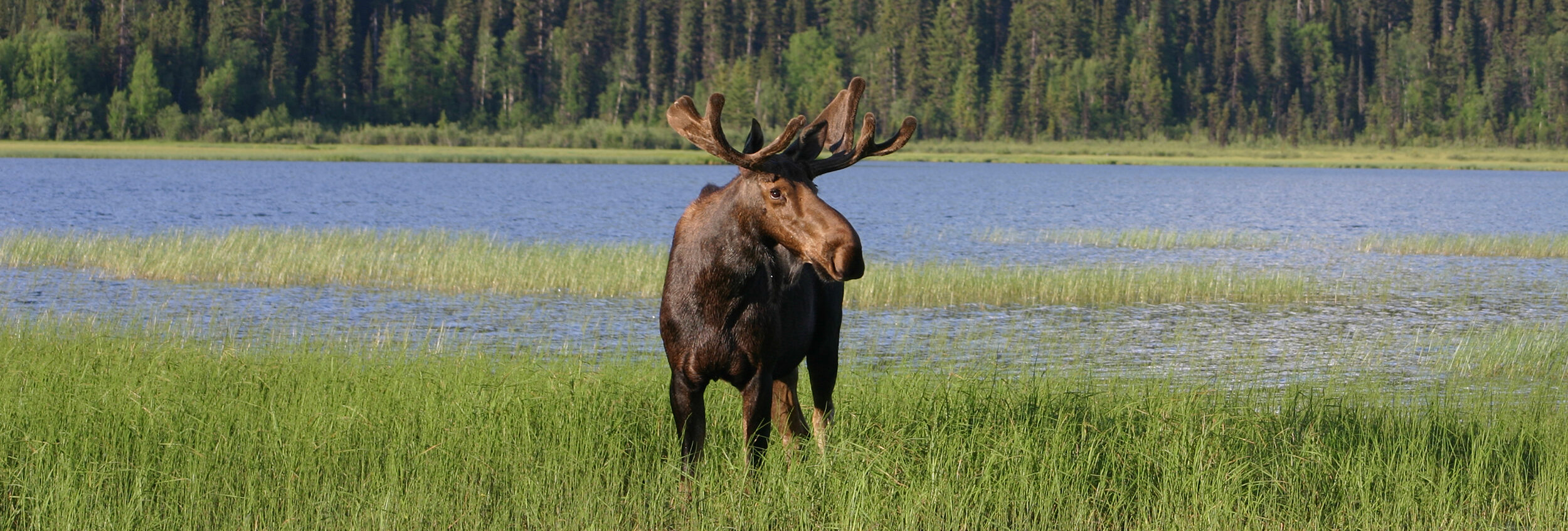
CPAWS-BC celebrates steps towards facilitating Indigenous land stewardship and increasing land protection in BC.
18 January 2022Xʷməθkʷəy̓əm (Musqueam), Sḵwx̱wú7mesh (Squamish) and səlilwətaɬ (Tsleil-Waututh) Territories / Vancouver, BC— The Canadian Parks and Wilderness Society – British Columbia (CPAWS-BC) celebrates a new partnership approach between Blueberry River First Nations and British Columbia to uphold Treaty 8 rights and protect lands and waters within Suunéch’ii Kéch’iige, “The Place Where Happiness Dwells”. The Blueberry River First Nations Implementation Agreement is an important step toward facilitating Indigenous land stewardship, recognizing Indigenous rights, and increasing land and biodiversity protection in BC.
Northeastern British Columbia has been significantly impacted by development activities such as oil and natural gas extraction and forestry. This agreement will help prevent and reverse biodiversity loss through improved land use planning and restoration.
“Lands managed by Indigenous Peoples are known to have the highest levels of biodiversity. We’re excited about an increase in protected areas in BC, especially with Indigenous stewardship at the forefront,” says Meaghen McCord, Executive Director with CPAWS-BC.
This agreement is a response to the BC Supreme Court (Yahey) decision made on June 29, 2021, which stated the Province is required to protect the constitutional rights of Blueberry River First Nations and better manage the cumulative effects of industrial development on Blueberry River First Nations Treaty rights.
Collaborative land use planning detailed in this agreement identifies new areas for protection from logging, implements restrictions on oil and natural gas development in Blueberry Rivers’ Claim Area, and details an ambitious timeline for implementation. New land protections that value ecosystem health over natural resource extraction will advance BC’s commitment to protecting 30 percent of lands by 2030. The increase in protected areas and an ecosystem-based management approach will help safeguard biodiversity and species at risk.
The agreement includes new funding to restore a more intact and diverse forest with native plants. Indigenous knowledge and western science will be brought together in wildlife monitoring and management, with a focus on moose and caribou population recovery. Restoration to heal the land, and co-management of wildlife will ensure healthy ecosystems for future generations.
“Indigenous Peoples have stewarded rich and healthy landscapes since time immemorial. We hope this new partnership approach in land use planning will help fast track a pathway for creating new, and recognizing already declared, Indigenous Protected and Conserved Areas (IPCAs) in BC.” says Meaghen McCord, Executive Director.
This agreement is great news for the modernization of land-use planning and shared decision-making in BC that recognizes Indigenous rights and responsibilities and considers cumulative effects. We congratulate Blueberry River First Nations and the Province on this important agreement.
-30-
For interviews, contact:
Rippon Madtha, Communications Manager, CPAWS BC
rippon@cpaws.org | (604) 685-7445 x23
Resources:
“Province, Blueberry River First Nations reach agreement“ Government of British Columbia, 18 Jan. 2023. Press release. https://news.gov.bc.ca/releases/2023WLRS0004-000043
Where Happiness Dwells – Blueberry River First Nations
About CPAWS-BC:
The CPAWS British Columbia chapter (CPAWS-BC) works to protect wilderness in every corner of BC and deep into the ocean. We have been defending BC since 1978, and are dedicated to keeping BC’s natural environment thriving forever. Nature is BC’s best hope.
www.cpawsbc.org
Follow us! @CPAWSBC
CPAWS-BC celebrates a commitment to protecting 30% by 2030 and advancing Indigenous Protected and Conserved Areas in BC
CPAWS-BC applauds provincial direction to protect 30% of land by 2030
December 8, 2022, traditional unceded Coast Salish Territory/Vancouver, British Columbia — The Canadian Parks and Wilderness Society, British Columbia (CPAWS-BC) is celebrating the Government of BC’s move to take major action on conservation by protecting 30% of lands by 2030 and advancing Indigenous Protected and Conserved Areas (IPCAs). This crucial direction was set through the mandate letter from the Premier to the new Minister of Water, Land and Resource Stewardship, Nathan Cullen, and makes BC the second province in Canada to make this commitment.
“With this direction, BC is investing in our future, and protecting the natural world that provides our food, clean water, clean air and stable climate,” says Tori Ball, Terrestrial Conservation Manager with CPAWS-BC. “Protected areas help to mitigate the worst effects of climate change, while contributing to diversified local economies and advancing BC’s reconciliation goals. This is extremely good news for all British Columbians.”
“We are very happy to see the Government of BC remains committed to protecting our coastal marine ecosystems in this mandate too,” says Kate MacMillan, Ocean Conservation Manager for CPAWS-BC. “This is good for marine life and also safeguards the livelihoods of those living there. A healthy ocean is good for nature, and for BC’s economy.”
Existing protected area proposals and IPCA declarations add up to nearly 100,000 square kilometres, covering two and a half times the landmass of Vancouver Island.
“BC is the most biologically diverse province in Canada,” says Ball. “The new mandate letter shows support for work that is already underway to halt and reverse biodiversity loss here in BC . Protecting 30% by 2030, supporting IPCAs, developing a biodiversity law as a key recommendation from the Old Growth Strategic Review – this is all good news for our land, waters and wildlife.”
Indigenous Nations in the province are already leading the way through conservation visions, declarations and stewardship initiatives in their traditional territories. Ball says she is hopeful the mandate letter will specifically lead to increased action on Indigenous-led conservation proposals such as the Kaska Dena’s Dene K’éh Kusān and the Lower Similkameen’s sməlqmíx Protected Areas.
Research shows that biodiversity thrives on Indigenous-managed lands and waters, and these are just two of the incredible proposals that would safeguard intact watersheds and create refuges for wildlife like caribou and many other species” she says. “Their work allows threatened species to make a comeback, bolsters Indigenous rights to land and culture, and helps the province adapt to a rapidly changing climate, so it must be supported.”
The announcement comes during the Fifteenth Conference of the Parties (COP15) to the United Nations Convention on Biological Diversity (CBD) in Montreal, and where Ball and MacMillan are attending on behalf of CPAWS-BC alongside Indigenous partners to encourage Canada and the international community to land an ambitious new global deal to save nature, and urge them to support Indigenous Peoples’ land and ocean protection efforts.
-30-
For interviews, contact:
Tori Ball, Territorial Conservation Manager, CPAWS BC
tori@cpaws.org | (604) 685-7445 x24
Kate MacMillan, Ocean Conservation Manager, CPAWS BC
kate@cpaws.org| ( 604) 685-7445 x 26
About CPAWS-BC:
The Canadian Parks and Wilderness Society (CPAWS) is Canada’s only nationwide charity dedicated solely to the protection of our public land, ocean, and freshwater, and ensuring our parks and protected areas are managed to protect nature. Since 1963, CPAWS has played a leading role in protecting over half a million square kilometers. Our vision is to protect at least half of Canada’s public land and water in a framework of reconciliation – for the benefit of wildlife and people.
The CPAWS British Columbia chapter (CPAWS-BC) works to protect wilderness in every corner of BC and deep into the ocean. We have been defending BC since 1978, and are dedicated to keeping BC’s natural environment thriving forever. Nature is BC’s best hope.
www.cpawsbc.org
Follow us! @CPAWSBC
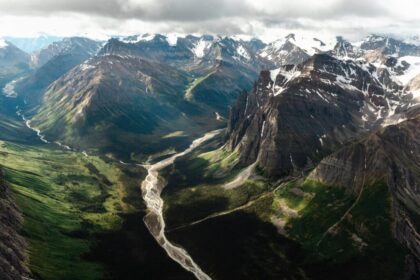 Kaska lands and waters. Photo by Adam Combs.
Kaska lands and waters. Photo by Adam Combs.
Dear Premier Eby, Minister of Lands, Waters and Resource Stewardship Josie Osborne and other key Ministers,
RE: ENGO support for Ashnola sPA
We would like to express our support for the sməlqmíx/Similkameen Peoples, Lower Similkameen Indian Band (LSIB) and the Ashnola sməlqmíx Protected Area (sPA). We urge you to support LSIB in their efforts to secure federal funding through the Indigenous-led area-based conservation program for the implementation of the Ashnola sPA and to respectfully engage with the sməlqmíx/LSIB at a strategic government-to-government level to implement the sPA.
The sməlqmíx, the syilx people of the Similkameen Valley, have conserved and stewarded their traditional territories since time immemorial and continue to exercise their leadership today. The Ashnola sməlqmíx Protected Area encompasses important ecological and cultural areas, including high concentrations of species at risk, which are in need of added protection through sməlqmíx management.
The Ashnola Watershed in its entirety has been declared protected in sməlqmíx/syilx law. The Ashnola River Corridor faces multiple threats – from forestry activity, a surge of mining claims, unauthorized residential development and irresponsible recreational users, while gates block access into the Cathedral Lakes area. These all raise questions about water quality, sməlqmíx access and wildfire management in this critical ecosystem. The Ashnola sPA will provide exceptional habitat connectivity for wildlife movement and connects two provincially significant protected area complexes – Skagit and Manning Provincial Parks with Cathedral Provincial Park and Snowy Protected Area.
The sməlqmíx declaration of protection for the full Ashnola Watershed provides a historic opportunity to advance conservation and reconciliation with the peoples and lands of the Similkameen Valley.
We hope to see BC respectfully engage with the sməlqmíx/LSIB at a strategic government-to-government level, including providing resources, to advance their sməlqmíx Protected Area vision for the Ashnola Watershed and beyond. Doing so is an important opportunity to make good on your commitments under the BC Declaration on the Rights of Indigenous People Act and subsequent DRIPA Action Plan.
Signed by
Tori Ball, Canadian Parks and Wilderness Society – British Columbia
Candace Batycki, Yellowstone to Yukon Conservation Initiative
Jessica Clogg, West Coast Environmental Law
Charlotte Dawe, Wilderness Committee
Robyn Duncan, Wildsight
Mitch Friedman, Conservation Northwest
Ian Graham, Okanagan Similkameen Parks Society
Doreen Olson, South Okanagan-Similkameen National Park Network
TJ Watt, Ancient Forest Alliance
Ken Wu, Endangered Ecosystems Alliance
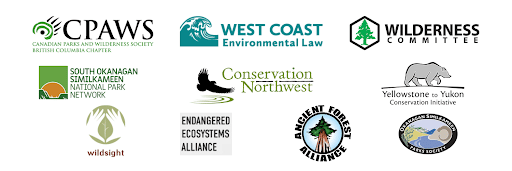
April 12, 2022,
Xʷməθkʷəy̓əm (Musqueam), Sḵwx̱wú7mesh (Squamish) and səlilwətaɬ (Tsleil-Waututh) Territories / Vancouver, BC — The Canadian Parks and Wilderness Society – British Columbia (CPAWS-BC) celebrates the BC government’s announcement to implement the Declaration Act Action Plan to fulfil the UN Declaration on the Rights of Indigenous Peoples (UNDRIP) commitments.
This historic announcement further bolsters the provincial governments’ efforts in reconciling with Indigenous Peoples in BC. Premier John Horgan took an empowering step in November 2019 by adopting the Declaration on the Rights of Indigenous Peoples Act (DRIPA) into law, making BC the first Canadian jurisdiction to implement the UN Declaration through legislation.
The plan outlines 89 measurable actions every ministry in the BC government will undertake to create a more inclusive province for all Indigenous Peoples in British Columbia. Indigenous leadership and meaningful collaboration outlined in the plan supports a bright oath for lands and water conservation. Created in consultation with First Nations, Métis, and Inuit Peoples, the plan claims to reflect the priorities and aspirations of all Indigenous Peoples living in BC.
“This important announcement ushers in renewed hope for Indigenous communities in British Columbia, knowing that the provincial government is taking a step in the right direction to correct historical injustices, facilitate self-determination, and ensure Indigenous Territories are brimming with healthy landscapes, waters, and biodiversity. These places have been thriving for millennia under Indigenous stewardship,” says Kevin Barlow, Executive Director of CPAWS-BC. “We hope that this significant step-change also looks to fast track conservation projects on the ground and in the ocean, while recognizing unilaterally-declared Indigenous Protected and Conserved Areas (IPCAs) as part of this reconciliatory action plan.”
We acknowledge that reconciliation and decolonization is an ongoing process that requires all of us to be actively involved. As we work toward the protection of diverse ecosystems, CPAWS-BC will do so in the spirit of decolonization, recognizing the essential leadership of the Indigenous stewards who have cared for these lands and waters since time immemorial. We are committed to deepening our relationships with Indigenous partners and we recognize that it is our responsibility to support Indigenous Peoples to safeguard their land and water.
As a team, we are advancing awareness, knowledge, and capacity on our staff and board by providing cultural competency learning opportunities and workshops with Indigenous speakers, Elders, storytellers, and facilitators.
For more information, contact:
Rippon Madtha
Communications Manager
604-685-7445 (x 23)
rippon@cpawsbc.org







 Kaska lands and waters. Photo by Adam Combs.
Kaska lands and waters. Photo by Adam Combs. 